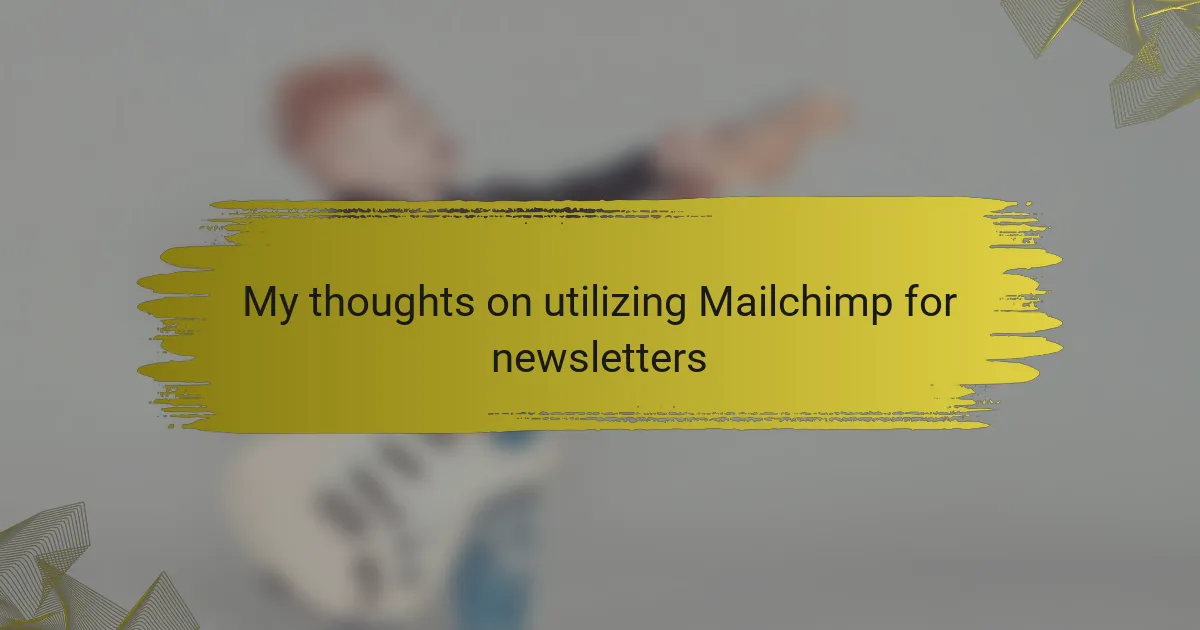Key takeaways
- Mailchimp’s user-friendly interface allows for easy creation of visually appealing emails, enhancing audience connection.
- Newsletters foster a sense of community and engagement by sharing personal insights and encouraging audience feedback.
- Key features of Mailchimp, such as segmentation and automation, streamline outreach efforts and improve content relevance.
- Analyzing metrics like open and click-through rates can significantly enhance newsletter effectiveness and audience engagement.
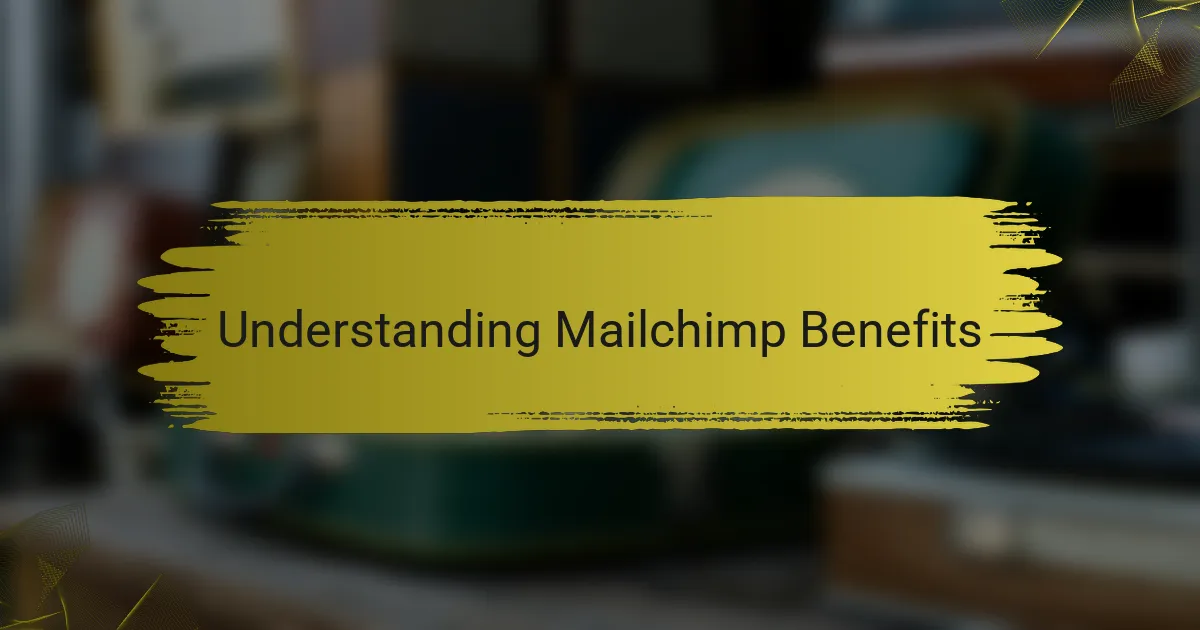
Understanding Mailchimp Benefits
When I first started using Mailchimp for my newsletters, I was surprised by how user-friendly it is. The drag-and-drop interface made designing emails feel intuitive, which is essential for someone who isn’t a tech wizard. Have you ever felt overwhelmed by complicated software? That’s why I appreciate how Mailchimp streamlines the process, allowing me to focus on what truly matters: connecting with my audience.
One of the standout benefits of Mailchimp is its robust analytics. I remember the excitement I felt when I could see exactly how many people opened my emails and which articles they clicked on the most. This data has transformed how I approach content creation. It’s not just about sending out newsletters; it’s about understanding my audience’s preferences to provide them with what they truly want.
Another aspect that I value is the integration capabilities. By connecting Mailchimp with my independent radio platform, I can automatically gather contacts and segment my audience. This means I can tailor my messages based on listener habits, which makes each communication feel more personal. Isn’t it wonderful to know that technology allows us to build deeper relationships with our listeners?
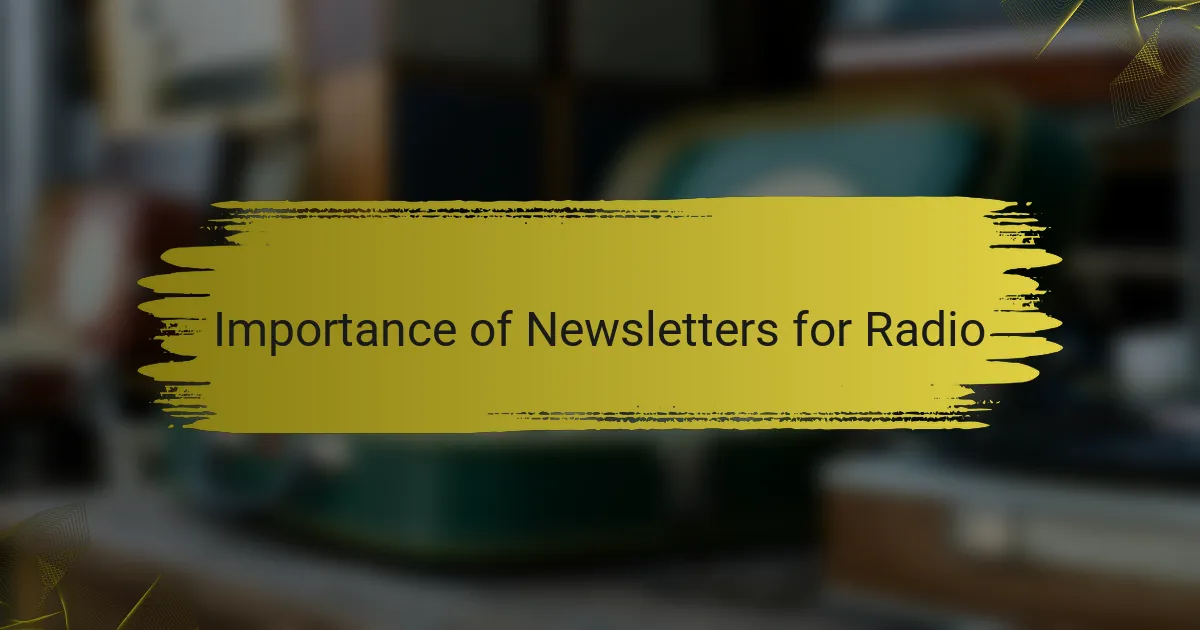
Importance of Newsletters for Radio
Newsletters play a crucial role in building a loyal community around independent radio stations. I remember the first time I sent out a newsletter—it felt like I was extending an invitation to my listeners to join me in a more personal space. This connection is key; it keeps audiences informed about upcoming shows, special guests, and events, fostering a sense of belonging that’s hard to replicate through a single broadcast.
Moreover, newsletters allow for storytelling beyond the airwaves. I often share behind-the-scenes insights and personal reflections on my radio journey, which listeners seem to resonate with deeply. It’s not just about what’s happening on air but creating a dialogue that enriches their listening experience. How many times have you wished for a deeper look into a host’s life or the themes of a particular show? Newsletters bridge that gap beautifully.
Finally, the importance of newsletters can’t be overstated when it comes to audience engagement and feedback. I’ve received countless responses from listeners who feel inspired to share their thoughts or even suggest topics for future shows. It’s empowering to cultivate a two-way conversation, and newsletters offer the perfect platform for that. Isn’t it rewarding to know that your audience wants to interact with you?
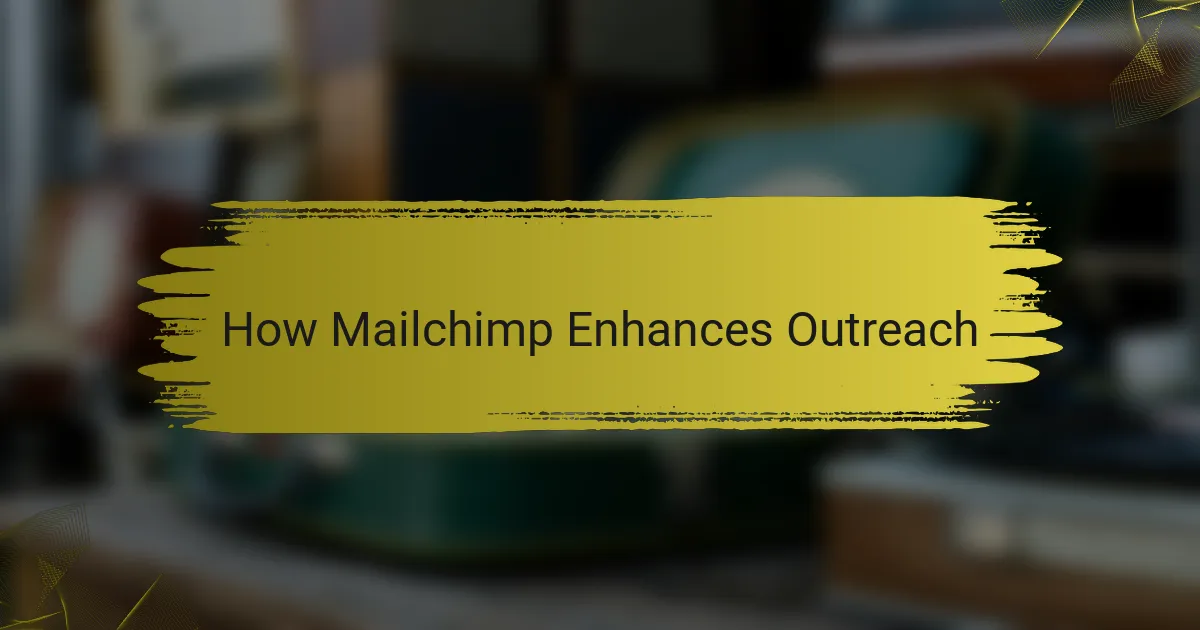
How Mailchimp Enhances Outreach
When I first started using Mailchimp for our indie radio station’s newsletters, I was amazed by how it streamlined our outreach efforts. With its user-friendly design, I could easily create visually appealing emails that captured our station’s vibe. I remember the excitement when we saw a significant uptick in subscriber engagement right after implementing Mailchimp: it felt like we were finally connecting with our audience on a deeper level.
Mailchimp offers several features that directly enhance outreach, making it an invaluable tool for independent media. Here’s what I appreciate most about using it:
- Segmentation: Target specific audience groups with tailored content, ensuring that the right message reaches the right listeners.
- Automation: Set up automated campaigns for event reminders or new content announcements, which saves time and keeps our audience updated effortlessly.
- Analytics: Access to detailed insights about open rates and click-through rates, enabling data-driven decisions for future content.
- Integration: Seamlessly connect with our website and social media platforms, allowing for cohesive messaging across various channels.
- A/B Testing: Experiment with different subject lines or layouts to see what resonates best, which has taught us a lot about our audience’s preferences.
Each of these features has not just improved our outreach; they’ve helped create a lively conversation around our radio programs, fostering a sense of community among our listeners.

Personal Experience with Mailchimp
Using Mailchimp for my newsletter has been a game-changer. I remember the first time I set it up, feeling both excited and a bit overwhelmed by the features. However, the user-friendly interface quickly turned that initial anxiety into confidence. Seeing my audience grow with each campaign was incredibly rewarding, every open rate gave me that little thrill of connection with my independent radio listeners.
One aspect I particularly appreciate is the automation. After setting up welcome emails for new subscribers, I felt relieved knowing they were being greeted even when I was busy with other tasks. It truly made me realize how Mailchimp can serve as a valuable ally in fostering relationships with my audience.
My experience has been positive overall, though I’ve had my share of learning moments. For instance, I once mistakenly sent a newsletter without proper testing, which taught me the importance of reviewing before hitting “send.” Those moments remind me that while technology can help us, we’re still accountable for the content we share.
| Pros | Cons |
|---|---|
| User-friendly interface | Cost can increase with more subscribers |
| Excellent automation features | Learning curve for advanced features |
| Good analytics and reporting tools | Limited customization in free version |
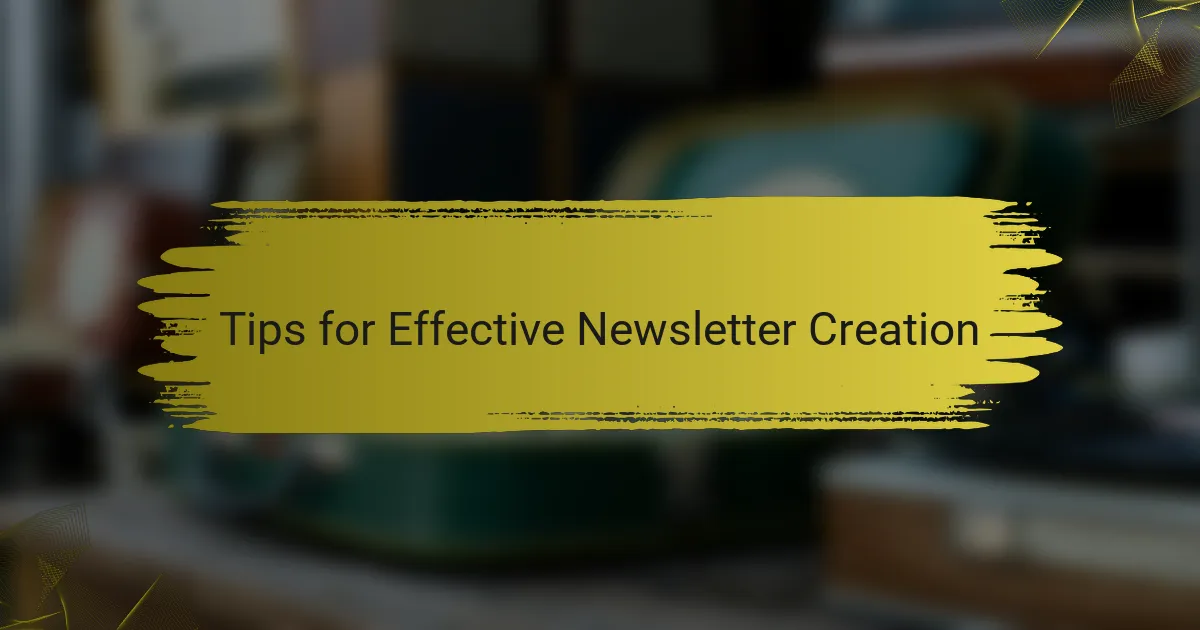
Tips for Effective Newsletter Creation
Creating an effective newsletter starts with understanding your audience. I often ask myself, “What do my listeners want to know?” This question guides my content choices and ensures I’m delivering value with every issue. Giving your audience relevant information builds trust and keeps them engaged, which is vital in the competitive landscape of independent radio.
Once you have a clear understanding of your audience, the next step is designing a visually appealing layout. I’ve found that keeping it clean and organized goes a long way. The first time I experimented with Mailchimp’s templates, I was amazed at how good my newsletters looked! Presentation matters; it reflects the professionalism of your station and enhances the overall experience for your readers.
Finally, don’t underestimate the power of testing your subject lines. I regularly A/B test to find out which wording resonates best with my listeners. It’s surprising how a slight change can lead to significantly higher open rates. Have you ever noticed how a catchy subject line makes you want to click? That’s what I strive for in every newsletter. Engaging with my audience in this way feels dynamic and successfully builds excitement around our content.
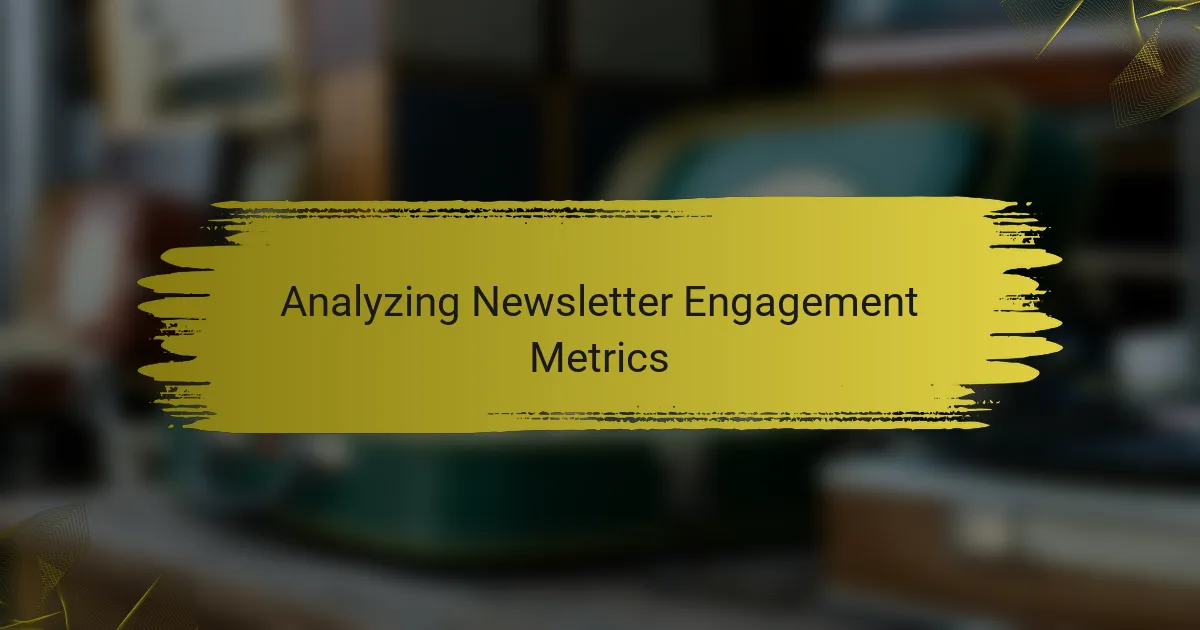
Analyzing Newsletter Engagement Metrics
When analyzing newsletter engagement metrics, I’ve found that open rates and click-through rates are two of the most telling indicators. Open rates give you a glimpse into how enticing your subject lines are, while click-through rates show whether your content resonates with readers. For my own newsletters, I noticed that tweaking the subject line could lead to significant increases in both metrics, often proving to be a game changer in audience engagement.
I remember one particular campaign where I tested different subject lines. The one that included a question generated a 20% higher open rate than my typical formats. This experience taught me the power of curiosity in driving engagement. Utilizing Mailchimp’s built-in analytics tools makes tracking these metrics straightforward, allowing for quick adjustments based on real-time data.
Here’s a comparison table that outlines engagement metrics:
| Metric | Description |
|---|---|
| Open Rate | Percentage of recipients who opened the newsletter |
| Click-Through Rate | Percentage of recipients who clicked on a link within the newsletter |
| Unsubscribe Rate | Percentage of recipients who opted out of future newsletters |
